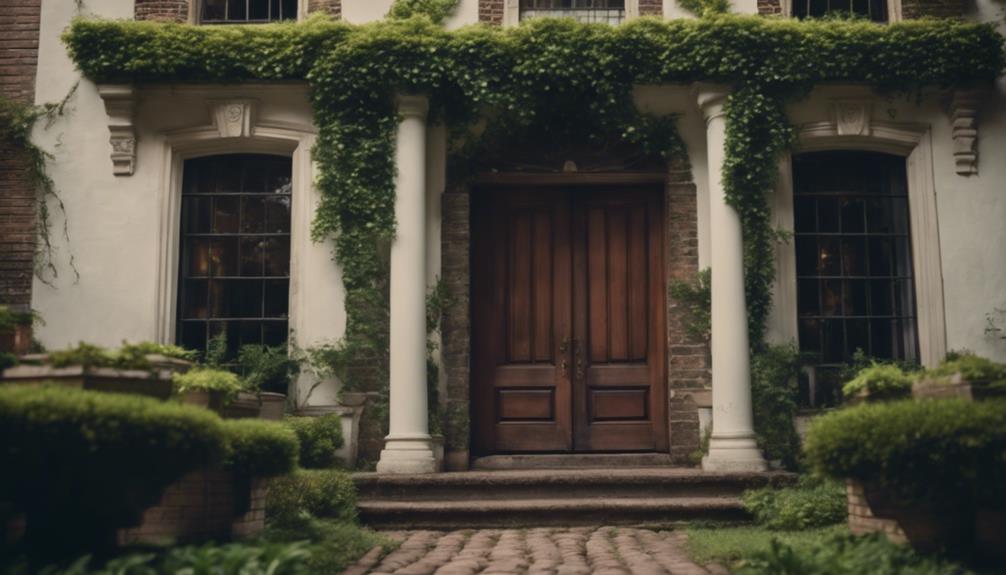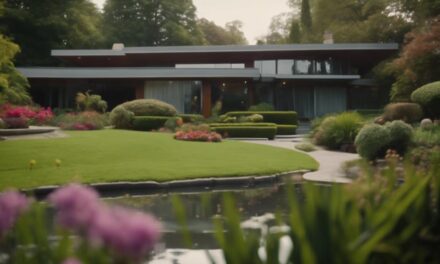Have you ever considered the theory that exploring historic homes can offer a deeper understanding of your community's heritage? You'll find treasures like the Alden B. Dow Home, with its striking architectural significance, or the Edsel and Eleanor Ford House, rich in historical background. Guided tours provide invaluable insights that books alone can't offer. As you step into these preserved residences, you'll uncover stories and details that paint a vivid picture of the past. Curious about what else you might discover within these walls?
Key Takeaways
- Visit the Meyer May House to explore Frank Lloyd Wright's Prairie School design.
- Discover opulent architectural details at the Edsel and Eleanor Ford House.
- Experience Art Deco design at Saarinen House at Cranbrook.
- Tour the Alden B. Dow House, known for blending design with natural surroundings.
- Explore distinctive architectural styles at Honolulu House and Turner-Dodge House.
Alden B. Dow Home Overview
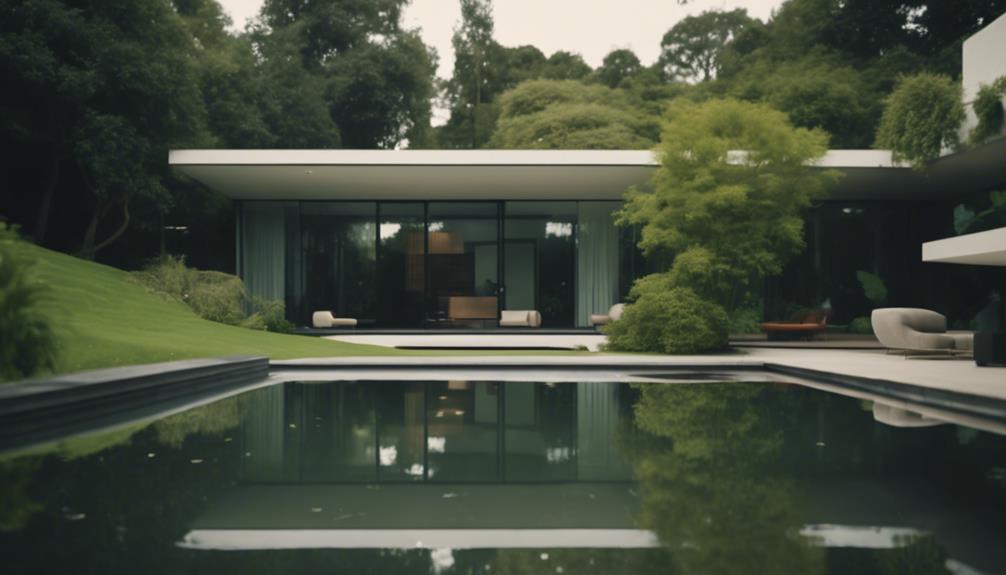
Nestled within a picturesque natural landscape, the Alden B. Dow Home showcases the architect's innovative vision and his mastery of blending design with the environment. As you explore this iconic residence, you'll quickly realize it's more than just a historic home; it's a demonstration of Dow's creative genius and his meticulous attention to detail.
Alden B. Dow, an apprentice of the renowned architect Frank Lloyd Wright, designed this home to embody his unique architectural philosophy. His ties to Wright are evident in the fluid integration of the house with its surrounding landscape, a hallmark of Wright's organic architecture principles. Yet, Dow's distinct style sets his work apart, making this residence a distinctive piece in the canon of historic homes.
One of the most intriguing aspects of the Alden B. Dow Home is the floating conference room, which seems to defy gravity and invites curiosity. This innovative feature, along with other unique architectural elements, reflects Dow's forward-thinking approach and commitment to pushing the boundaries of design.
To fully appreciate the nuances of Dow's work, you should consider taking one of the guided tours offered at the residence. These tours provide an in-depth look at the home's design and construction, offering you valuable insights into Dow's thought process and architectural philosophy. You'll learn how he harmonized his structures with their natural surroundings, creating spaces that are both functional and aesthetically engaging.
Visiting the Alden B. Dow Home on a guided tour not only lets you step back in time but also allows you to experience firsthand the visionary work of an architect who was profoundly influenced by Frank Lloyd Wright yet had a remarkable style of his own.
Architectural Significance
In exploring the architectural significance of these historic homes, you'll uncover how each residence not only reflects its era's design ethos but also showcases the unique vision of its architect.
Frank Lloyd Wright's Meyer May House in Grand Rapids and Smith House in Bloomfield Hills are sterling examples of the Prairie School design, emphasizing horizontal lines, flat roofs, and organic integration with the landscape. These homes epitomize Wright's philosophy of creating harmonious living environments that echo the natural world.
Detroit's historic mansions, like The Whitney and the Edsel and Eleanor Ford House, offer a feast for the eyes with their lavish architectural details. The Whitney, with its Tiffany stained-glass windows and bronze staircases, and the Ford House, showcasing English Cotswold design, are demonstrations of the opulence and craftsmanship of their time. These elements not only highlight the architectural significance but also the luxurious lifestyles of their original inhabitants.
Meanwhile, the Saarinen House at Cranbrook Academy of Art is a beacon of Art Deco design, complete with original furnishings crafted by the Saarinen family. This house museum captures the sleek, geometric lines and modernist flair that define the Art Deco movement, making it a must-visit for design enthusiasts.
The Alden B. Dow House is another architectural masterpiece, blending unique design with the natural surroundings. The floating conference room is a striking feature that underscores Dow's innovative approach, influenced by his mentor, Frank Lloyd Wright.
Lastly, historic house museums like the Honolulu House in Marshall, Turner-Dodge House in Lansing, and Thompson House in Hudson each offer a distinctive architectural style, providing a rich tapestry of Michigan's architectural heritage. These homes don't just preserve history; they make it accessible and engaging for every visitor.
Historical Background
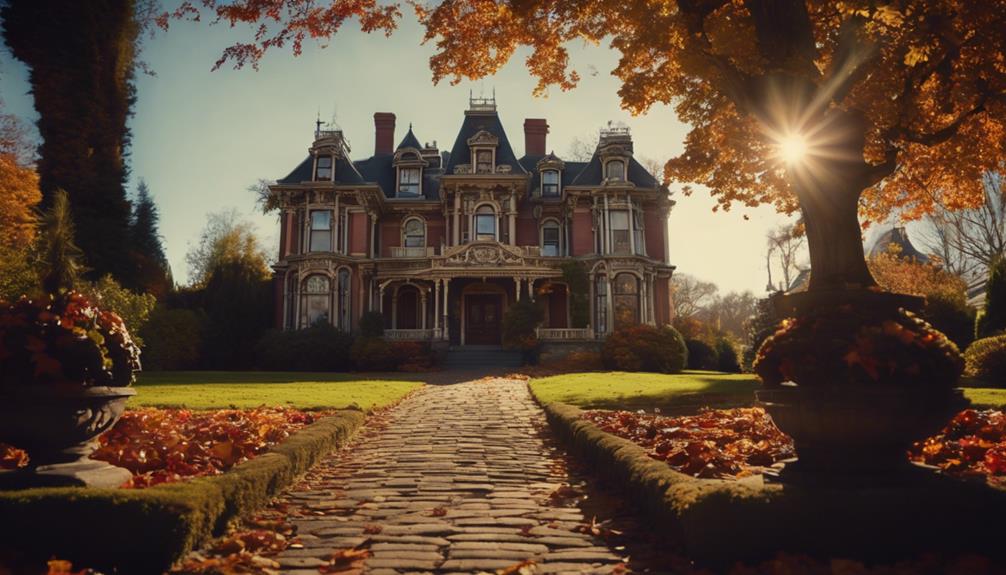
Each of these historic homes in Michigan tells a compelling story of its time, offering a vivid snapshot of the cultural and social dynamics that shaped their eras. When you step into a historic house in Michigan, you're not just entering a building; you're immersing yourself in a rich tapestry of history and heritage.
Take, for instance, the architectural marvels that dot Michigan's landscape. These homes weren't merely places of residence; they were statements of style and status. The intricate woodwork, grand staircases, and period-specific furnishings speak volumes about the craftsmanship and aesthetic preferences of their time. Each architectural detail has a story to tell, reflecting the technological advancements and artistic trends prevalent during the period of their construction.
The lives of the former residents also add layers of intrigue to these homes. Many were influential figures in Michigan's development, such as prominent industrialists, politicians, and socialites. Their personal stories—filled with triumphs, struggles, and everyday occurrences—offer a humanizing glimpse into the past. By exploring these historic houses, you can gain insights into their daily lives, social activities, and even the historical events that unfolded within their walls.
Moreover, these homes are often situated in historically significant neighborhoods, enriching their context. The surrounding areas frequently mirror the growth and transformation of Michigan itself, from bustling industrial hubs to serene suburban enclaves. The historical background of these homes isn't just about the buildings; it's about understanding the broader narrative of Michigan's evolution.
In essence, visiting these historic homes allows you to experience Michigan's history firsthand, offering an educational and emotionally resonant journey through time.
Guided Tours
Stepping into these historic homes offers a unique opportunity to deepen your understanding through guided tours, where expert docents bring the stories and architectural details to life. Whether you're exploring the Prairie School design of the Meyer May House in Grand Rapids or the Art Deco marvel of the Saarinen House at Cranbrook, walking tours provide a rich narrative of the past.
At the Meyer May House, you'll appreciate Frank Lloyd Wright's hallmark horizontal lines and open spaces. The guided tours here explore Wright's design philosophy, emphasizing how the home harmonizes with its natural surroundings.
Moving to the Edsel and Eleanor Ford House in Grosse Pointe Shores, the tours showcase Tiffany stained-glass windows and a bronze staircase, immersing you in the opulent lifestyle of the Ford family. Don't miss the House dining room, which displays the English Cotswold design.
For a blend of architecture and nature, the Alden B. Dow House stands out with its floating conference room and seamless integration into the landscape, a reflection of Dow's apprenticeship under Wright. The tour information here often includes the house's innovative use of materials and space.
Here are some highlights you can look forward to on these guided tours:
- Meyer May House: Discover Frank Lloyd Wright's design philosophy through its horizontal lines and open spaces.
- Edsel and Eleanor Ford House: Experience the grandeur of Tiffany stained-glass windows and the English Cotswold design.
- Alden B. Dow House: Learn about the innovative floating conference room and its environmental integration.
These walking tours not only educate but also inspire, making each visit an enriching experience.
Visitor Information
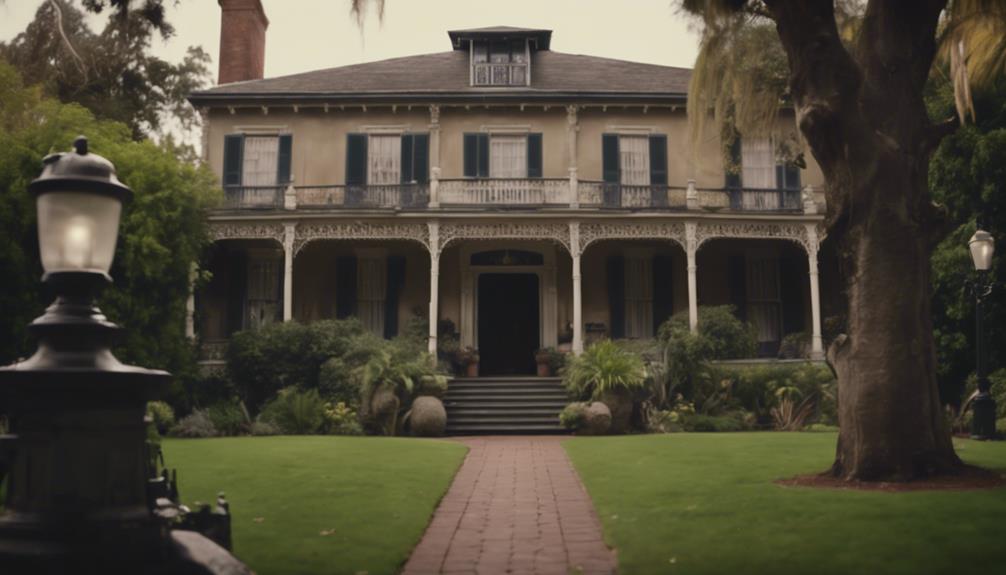
To make the most of your visit to these historic homes, you'll need to know their operating hours, admission fees, and guided tour availability.
Each site has specific schedules and costs, which can vary depending on the season or special events. Be sure to check in advance to plan your trip effectively and guarantee you don't miss any of the unique offerings.
Operating Hours Schedule
When planning your visit to historic homes like the Meyer May House or the Edsel and Eleanor Ford House, make sure to check their operating hours, which typically span from morning to late afternoon. These homes offer guided tours that allow you to explore unique architectural features, original furnishings, and understand their historical significance. Knowing the operating hours in advance helps you make the most of your visit.
Each historic home has specific schedules, and it's important to plan accordingly. For instance, the Meyer May House in Grand Rapids and the Edsel and Eleanor Ford House in Grosse Pointe Shores may have differing hours, especially during peak tourist seasons.
Here are some key points to keep in mind:
- Check the official website: Each home's website provides the most accurate and up-to-date information on operating hours, tour schedules, and any special events.
- Advance reservations: Some homes might require advance ticket purchases or reservations, particularly during busy periods.
- Seasonal variations: Operating hours can vary with the seasons, so be sure to verify any changes before your visit.
Admission Fee Details
Admission fees for historic homes in Michigan typically range from $10 to $20 per adult, offering a detailed glimpse into the state's rich architectural heritage and storied past. These fees often include access to the main exhibits and self-guided tours.
Many historic homes provide discounted rates for seniors, students, and children, ensuring that everyone can explore these cultural treasures. Some locations even offer free admission on select days or during special events, giving you a budget-friendly way to immerse yourself in history.
If you're planning multiple visits, consider annual memberships or season passes, which provide unlimited access and additional perks like exclusive events or early entry. For those interested in a more immersive experience, some historic homes charge an extra fee for specialized guided tours.
These can include behind-the-scenes looks or evening tours, adding unique value to your visit. For larger groups, such as school trips or organized tours, historic homes often offer group rates. These discounted prices make it easier to coordinate educational visits, ensuring that more people can appreciate the historical significance of these sites.
Whether you're a history buff or just looking for a unique outing, Michigan's historic homes have something to offer for everyone.
Guided Tour Availability
Guided tours at Michigan's historic homes offer visitors a unique opportunity to explore thoroughly the architectural nuances and rich histories of these remarkable properties. These guided tours provide an in-depth look at the design and construction of the homes. You'll gain insights into the stories behind these historic homes, learning about the lives of their former residents and the unique features that set these properties apart.
Knowledgeable docents lead the tours, sharing fascinating anecdotes and historical context that bring the past to life. As you walk through the halls of these beautiful homes, you'll not only admire their architectural beauty but also understand the meticulous restoration efforts that have preserved them for future generations.
Participating in these guided tours offers a memorable and educational experience, perfect for history enthusiasts and curious tourists alike. You'll leave with a deeper appreciation for the rich history and architectural splendor of Michigan's historic homes.
- In-depth insights: Learn about the design, construction, and stories behind the homes.
- Knowledgeable docents: Gain fascinating historical context and anecdotes.
- Educational experience: Perfect for history enthusiasts and tourists.
Nearby Attractions
While visiting these historic homes, you'll find plenty of nearby attractions to enhance your experience. Enjoy the serene beauty of local scenic parks and gardens that offer a perfect complement to architectural tours.
Additionally, don't miss local museums and exhibits that provide rich cultural contexts and deeper historical insights.
Scenic Parks and Gardens
Nestled amidst the historic homes, the scenic parks and gardens nearby offer you a tranquil escape into meticulously curated natural beauty and architectural splendor. Begin your journey at Cranbrook House & Gardens in Bloomfield Hills, Michigan. Here, the historic manor's grandeur is beautifully complemented by sprawling gardens that invite you to stroll through vibrant flower beds and elegant water features. The historic manor itself is a showcase of early 20th-century opulence and design.
Next, head to Meadow Brook Hall & Gardens in Rochester Hills, Michigan. This landmark is celebrated for its Tudor-revival architecture, showcasing intricate woodwork and majestic stone facades. The gardens surrounding the estate are equally enchanting, with meticulously maintained landscapes that reflect the estate's grandeur and the owner's love for horticulture.
For a different yet equally stunning experience, visit the W.K. Kellogg Manor House overlooking Gull Lake. This historic home showcases custom details and offers breathtaking views of the lake, complemented by beautifully designed gardens perfect for a peaceful retreat.
- Cranbrook House & Gardens: Historic manor with picturesque gardens
- Meadow Brook Hall & Gardens: Tudor-revival architecture and art pieces
- W.K. Kellogg Manor House: Overlooking Gull Lake with stunning gardens
Each of these destinations offers a unique blend of history and natural beauty that's sure to enhance your visit.
Local Museums and Exhibits
As you explore the historic homes and scenic gardens, you'll find that local museums and exhibits nearby offer a rich tapestry of cultural and historical insights that further enhance your visit.
Start by visiting the Henry Ford Museum in Dearborn, where innovation and history intertwine, providing a thorough exploration into America's past. In Grosse Pointe Shores, the Edsel and Eleanor Ford House reveals the opulent lifestyle and artistic tastes of the Ford family.
Historic house museums like the Meyer May House in Grand Rapids and the Honolulu House in Marshall showcase architectural masterpieces that transport you back in time. The Meyer May House, designed by Frank Lloyd Wright, is a pristine example of Prairie School architecture. The Honolulu House, with its unique blend of Italianate and Polynesian design, offers a fascinating glimpse into 19th-century life.
For those interested in restored historic residences, the James Scott Mansion in Detroit and the Felt Mansion in Saugatuck are must-sees. These beautifully restored properties highlight the grandeur of their eras and the meticulous craftsmanship of their restorations. By visiting these sites, you'll gain a deeper appreciation for the intricate details and historical significance that these architectural gems hold.
Frequently Asked Questions
What Town Has the Most Historic Homes?
When you're asking which town has the most historic homes, Grand Rapids' Heritage Hill neighborhood should come to mind. With over 1,300 homes showcasing diverse architectural styles, it's a treasure trove of history.
Preservation efforts saved these homes from demolition in the 1970s. You can join guided tours to explore Richardsonian Romanesque stone arches and Greek Revival designs, offering a detailed glimpse into pioneers' tastes and architectural innovations.
What Is the Most Visited Historic Home in the Us?
The most visited historic home in the US is George Washington's Mount Vernon in Virginia. Among presidential residences and colonial mansions, Mount Vernon stands out.
This heritage estate offers tours of its first floor and expansive 80-acre gardens. You'll need to buy tickets in advance to see the beautifully preserved rooms and Potomac River views.
The home's historic significance is tied to its association with America's first president and its well-preserved decor.
What Is the Largest Historic House in the United States?
Imagine stepping into a colossal time capsule, the Biltmore Estate in Asheville, North Carolina. It's the largest historic house in the U.S., spanning over 178,926 square feet.
Built by George Washington Vanderbilt II, this marvel showcases diverse architectural styles. Preservation efforts keep its 250 rooms, gardens, and winery intact.
The famous owner's vision lets you experience a lavish past, blending luxury and history seamlessly.
What Is a Historic House?
A historic house is a residential building that holds architectural, cultural, or historical significance. You'll find unique architectural styles, period furnishings, and historical artifacts inside.
Preservation efforts maintain these homes' original features, ensuring you experience authentic heritage tours. Exploring such homes offers a glimpse into past lifestyles and cultural heritage.
Through historic preservation, these houses remain as educational landmarks, showcasing the evolution of design and society.

